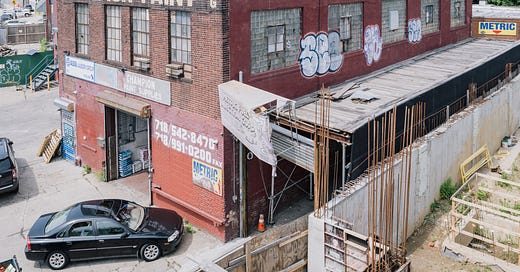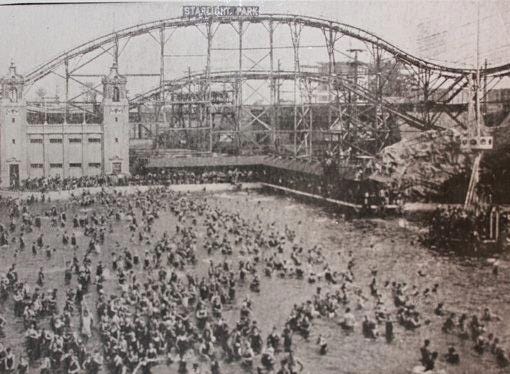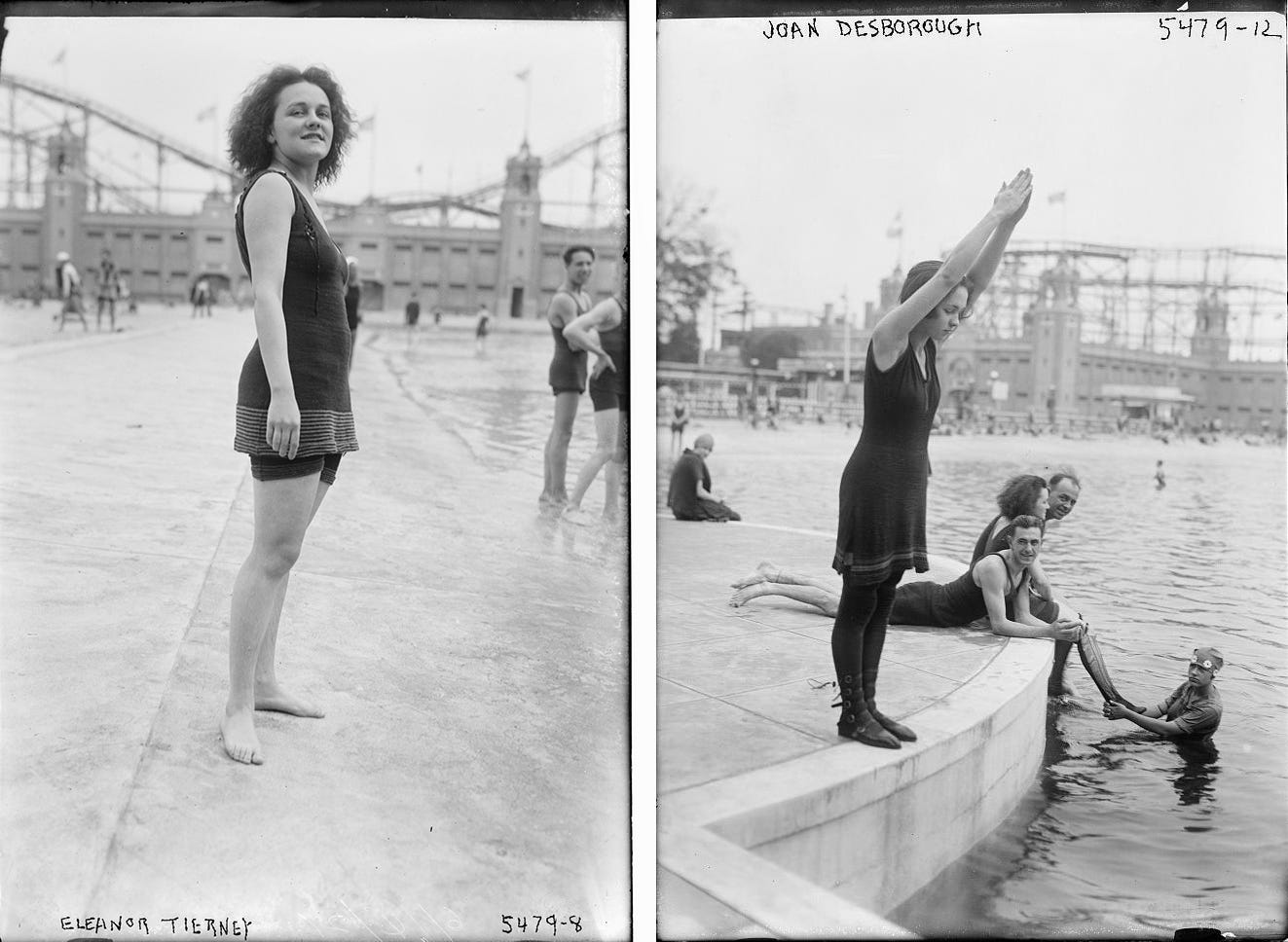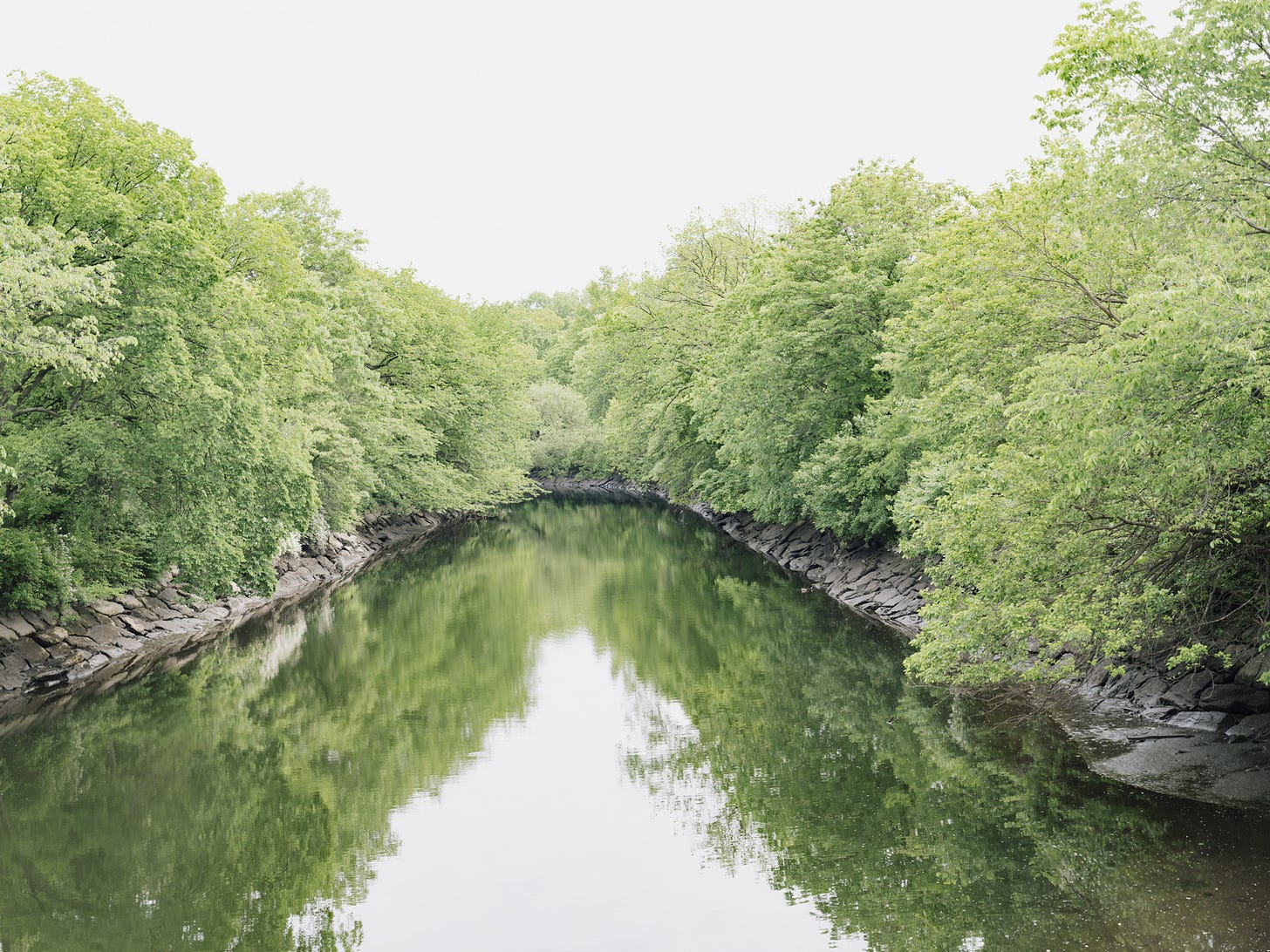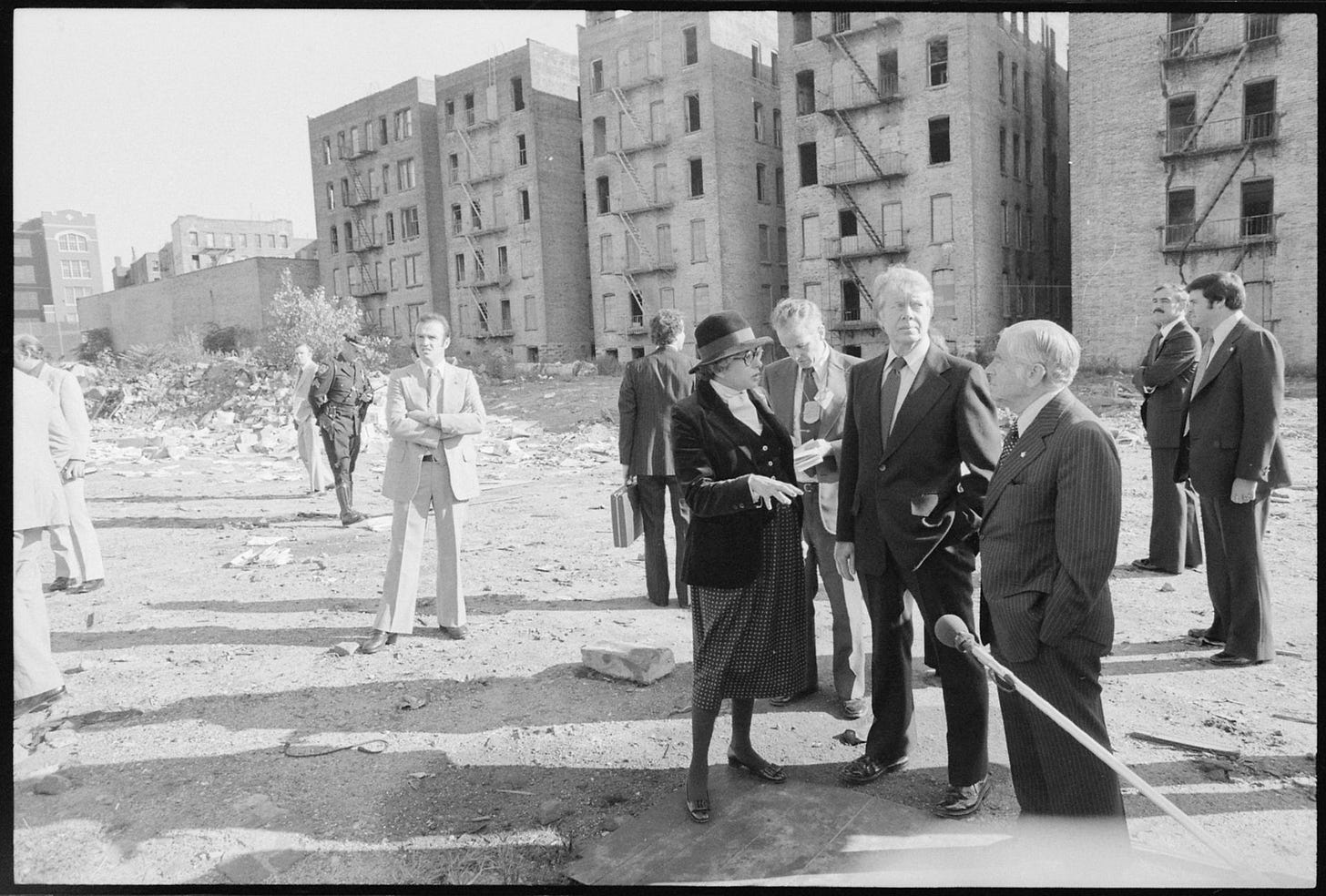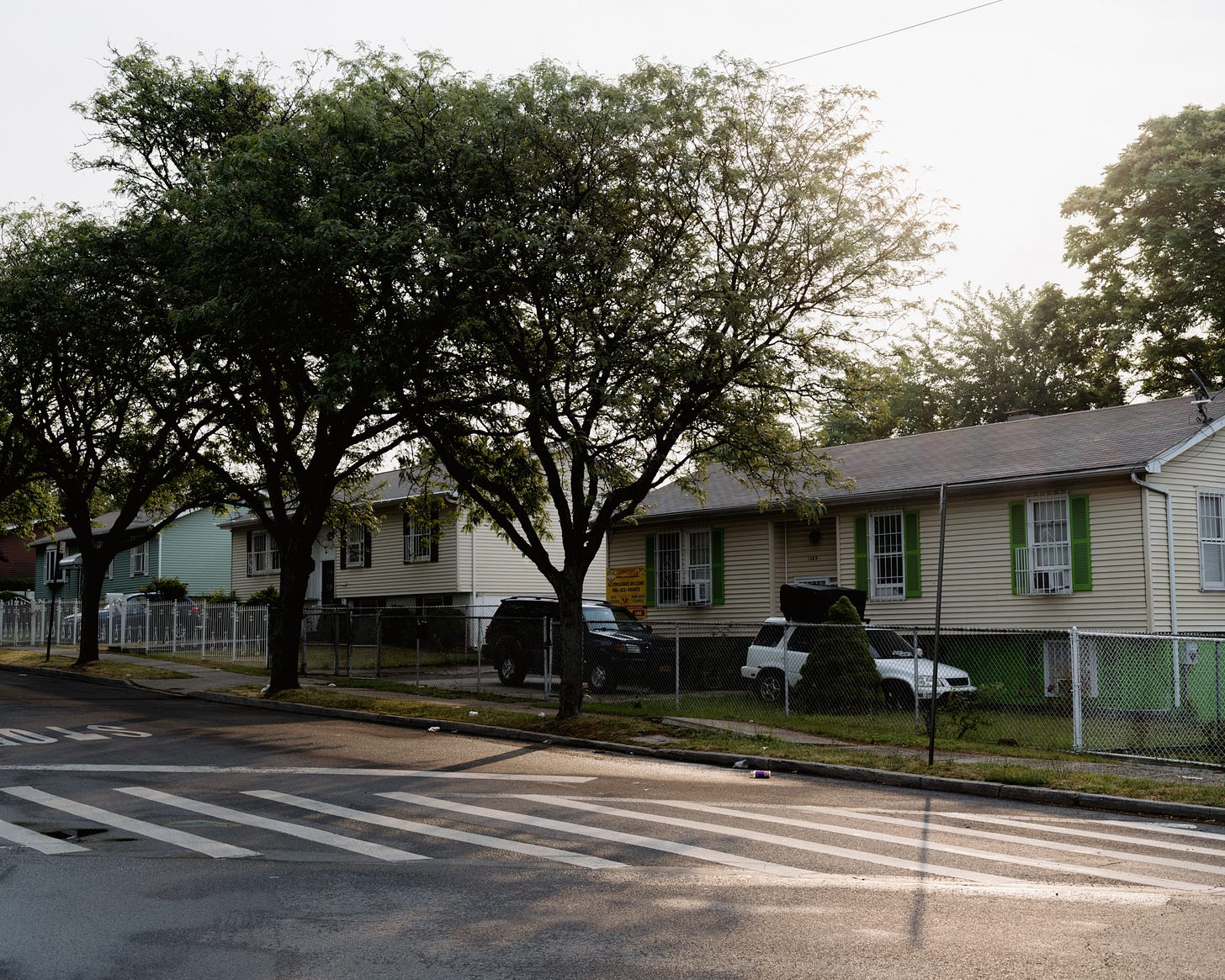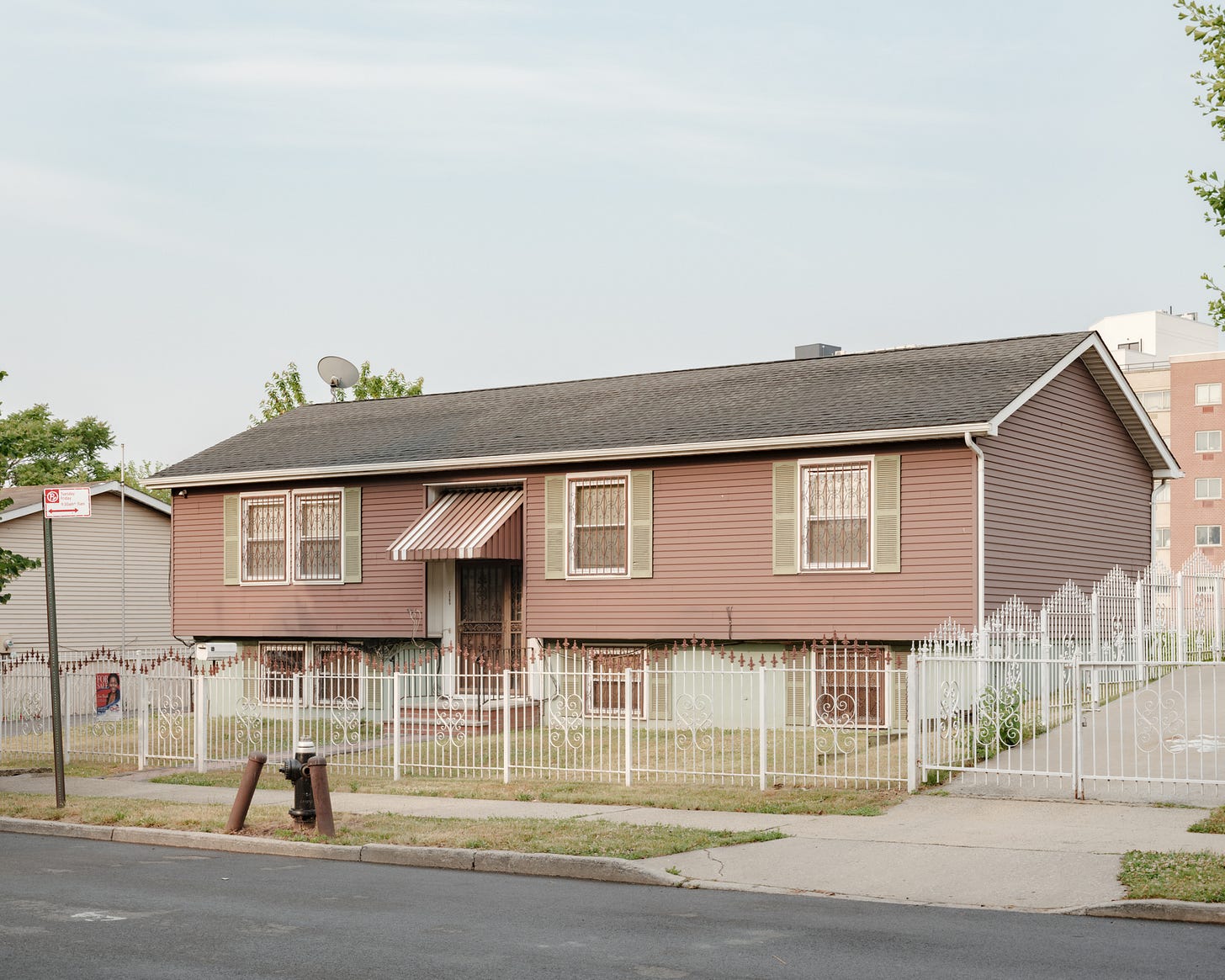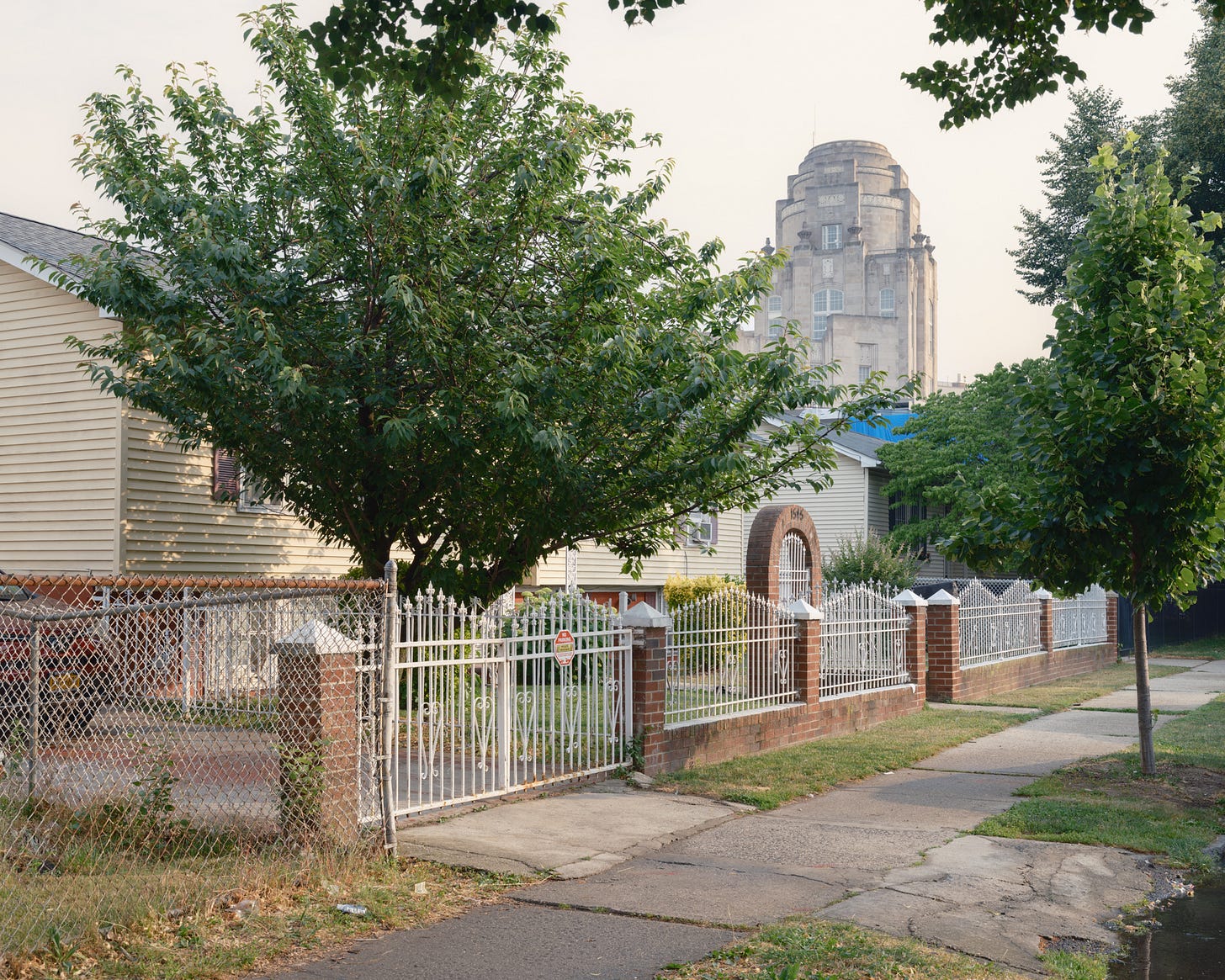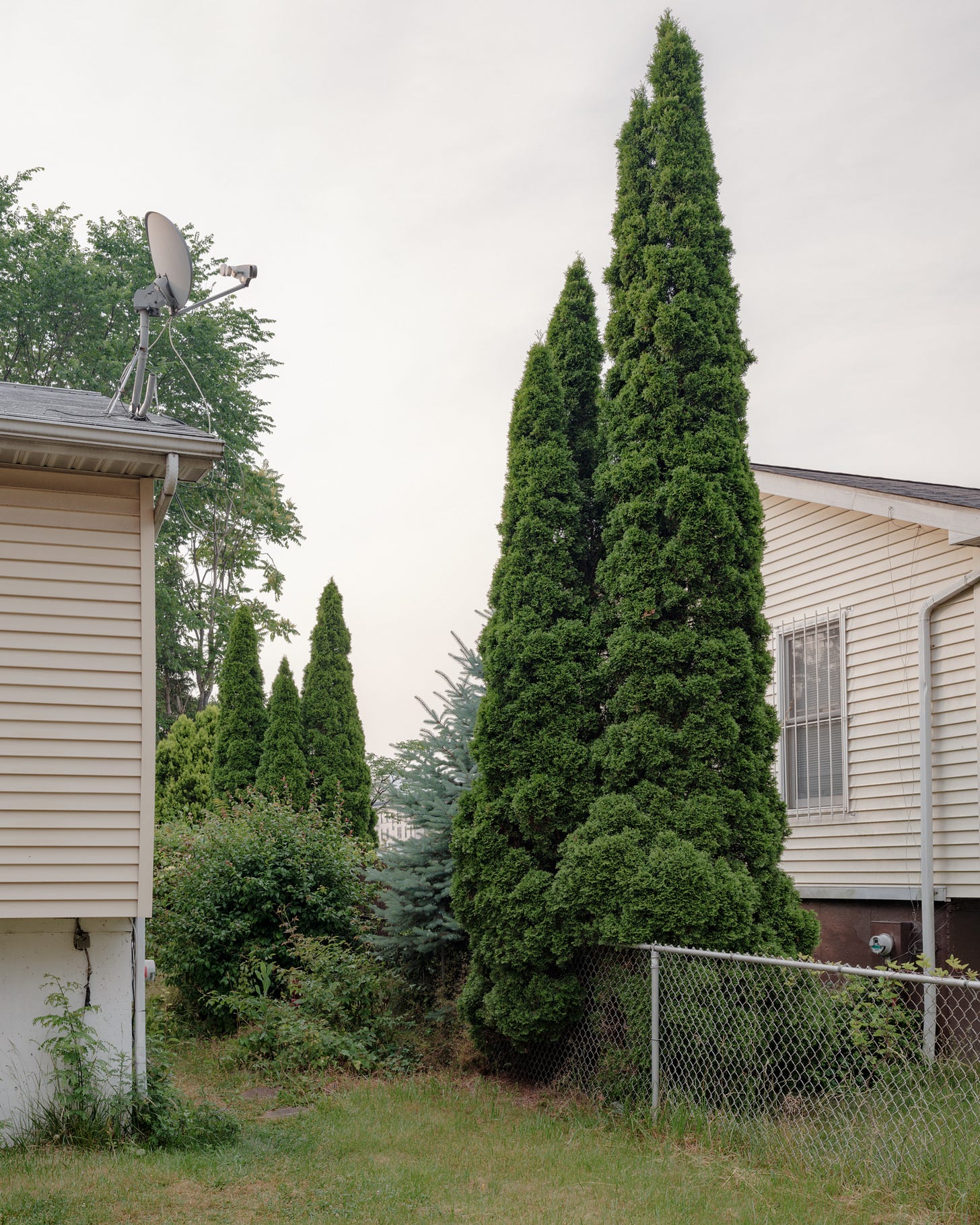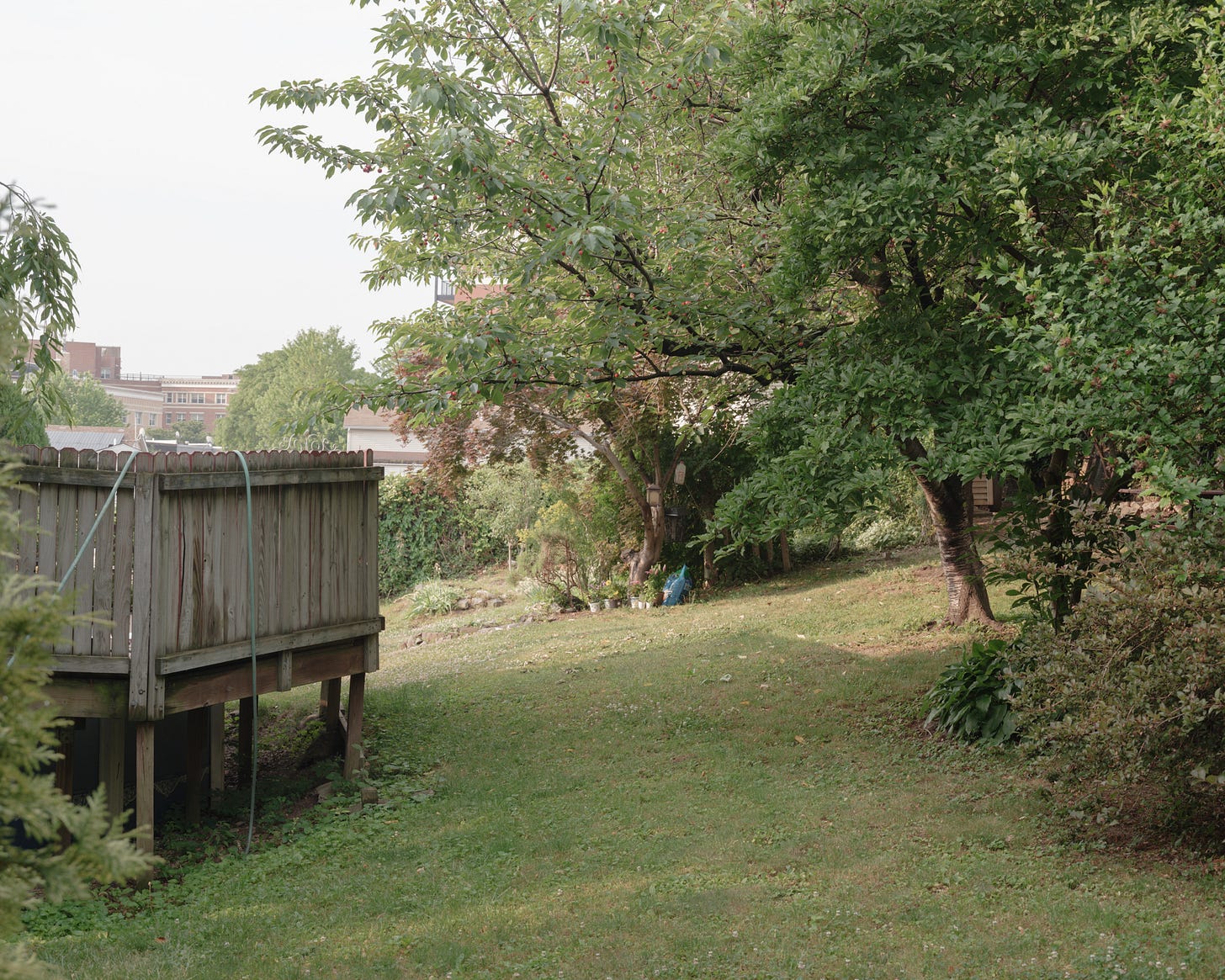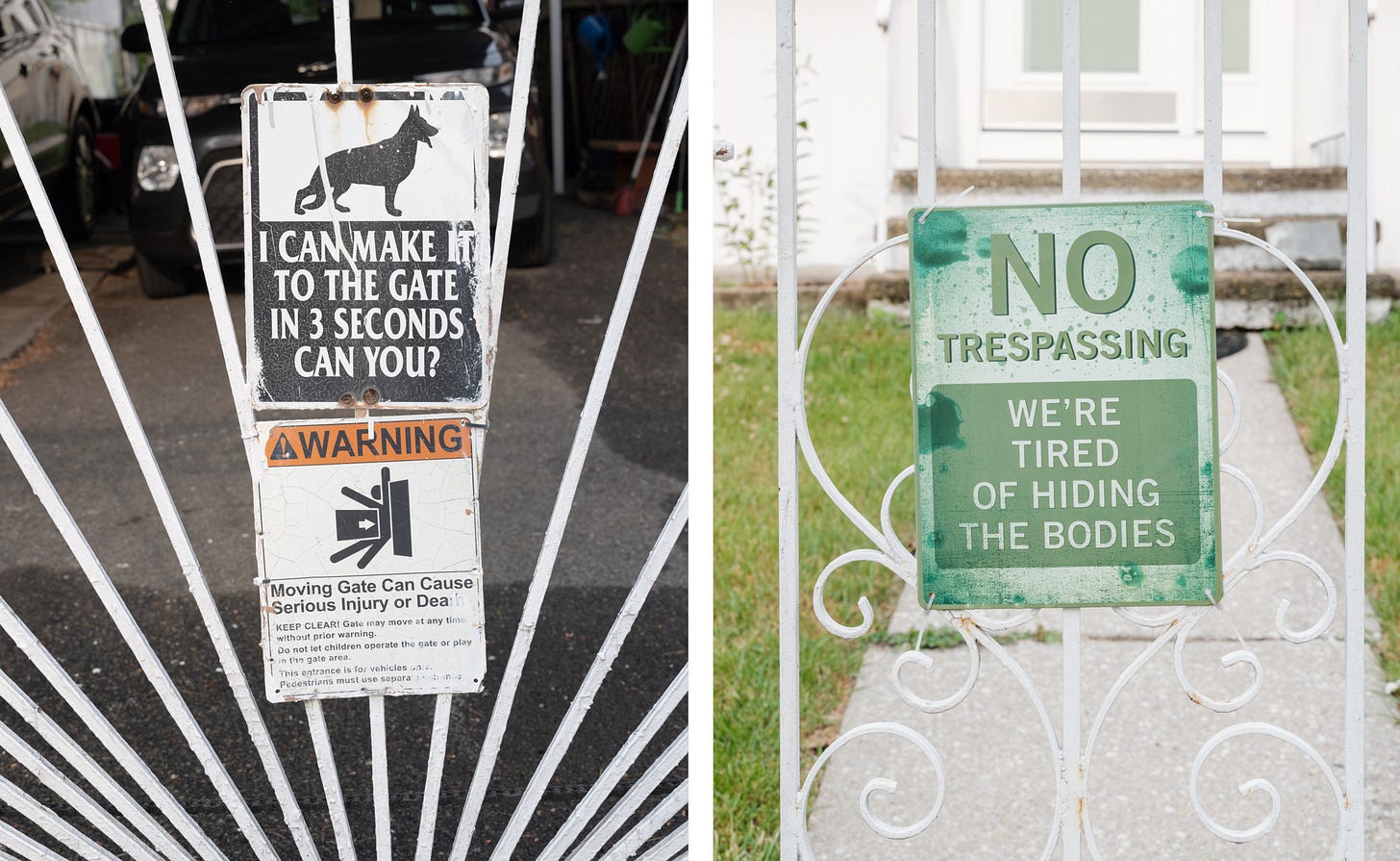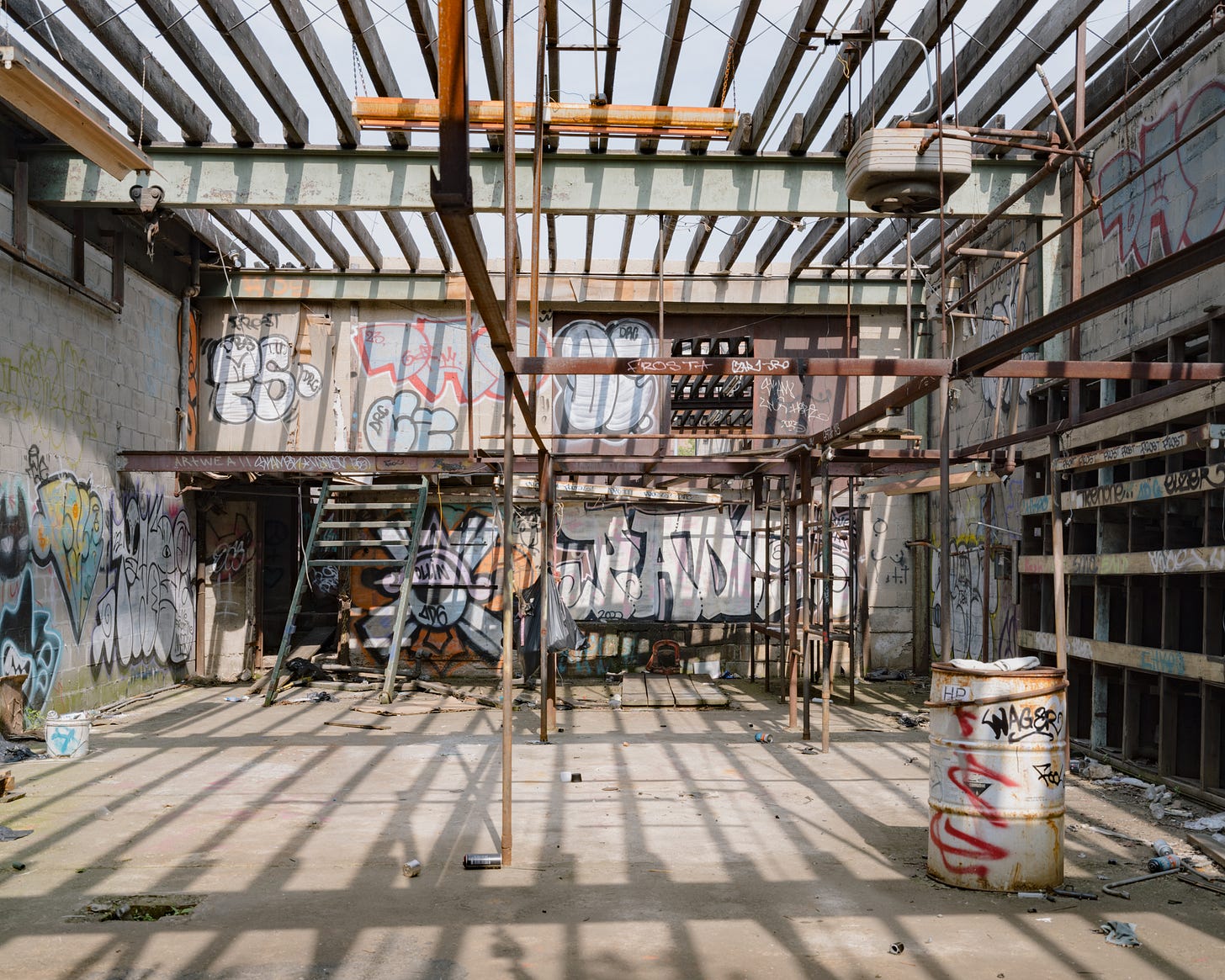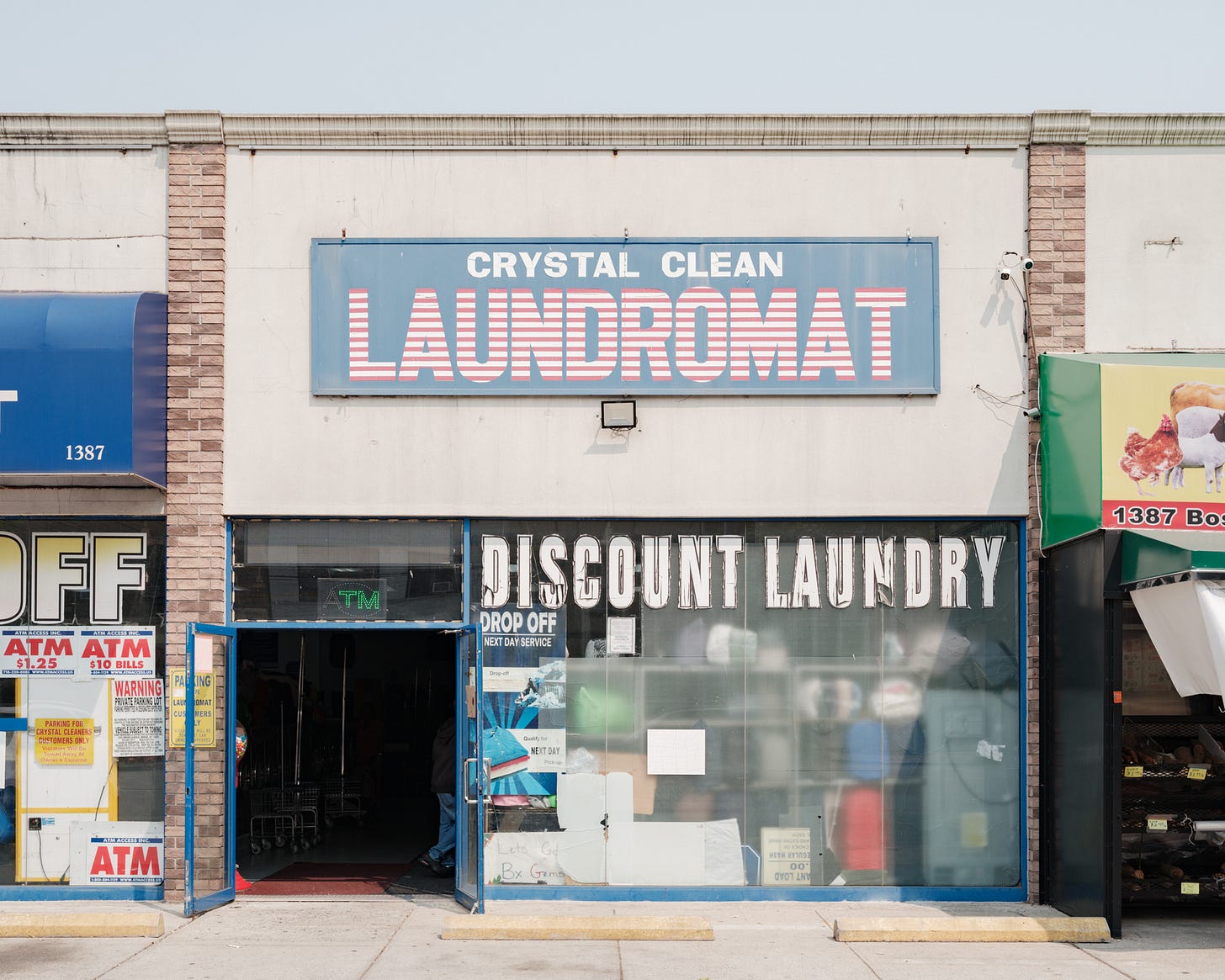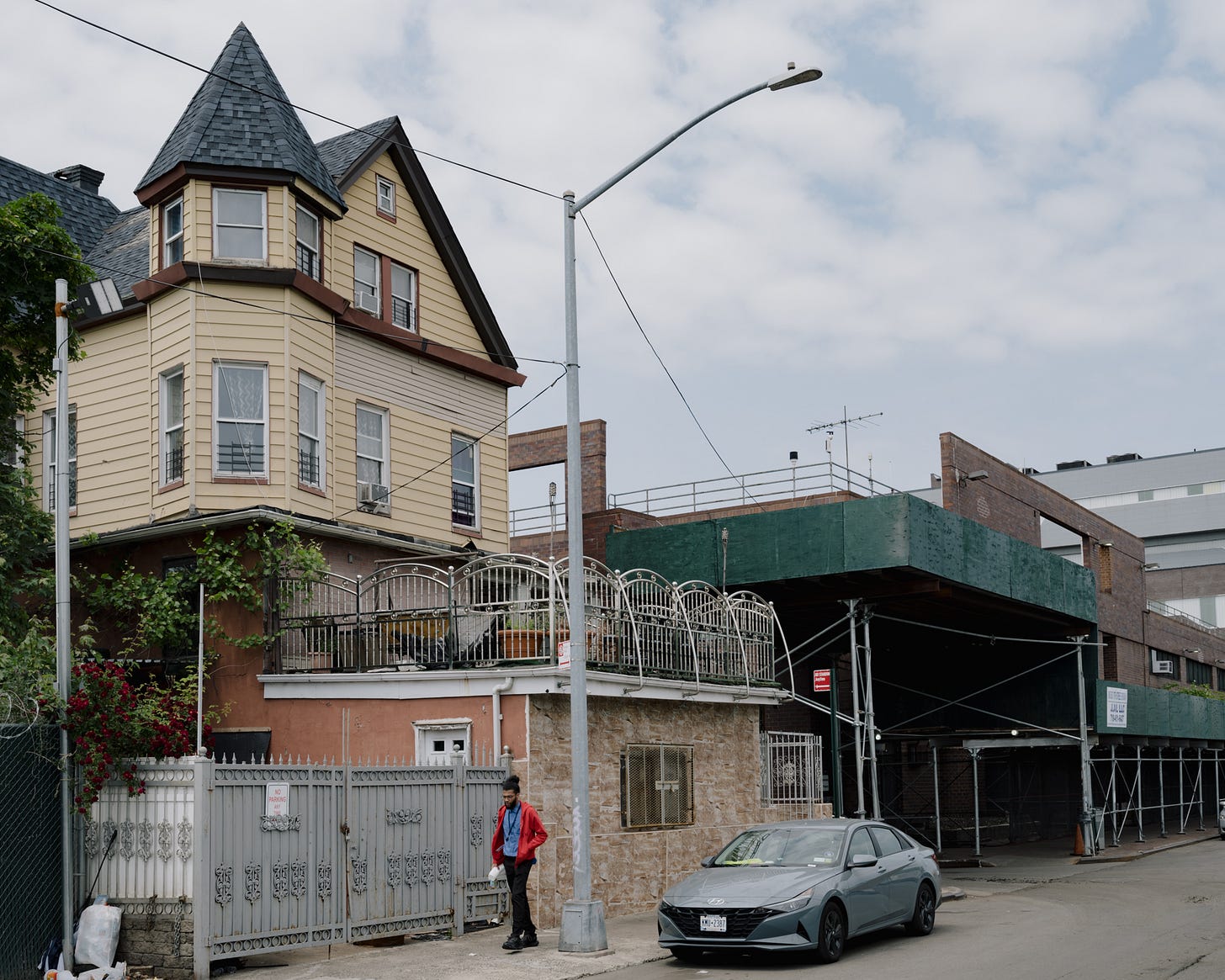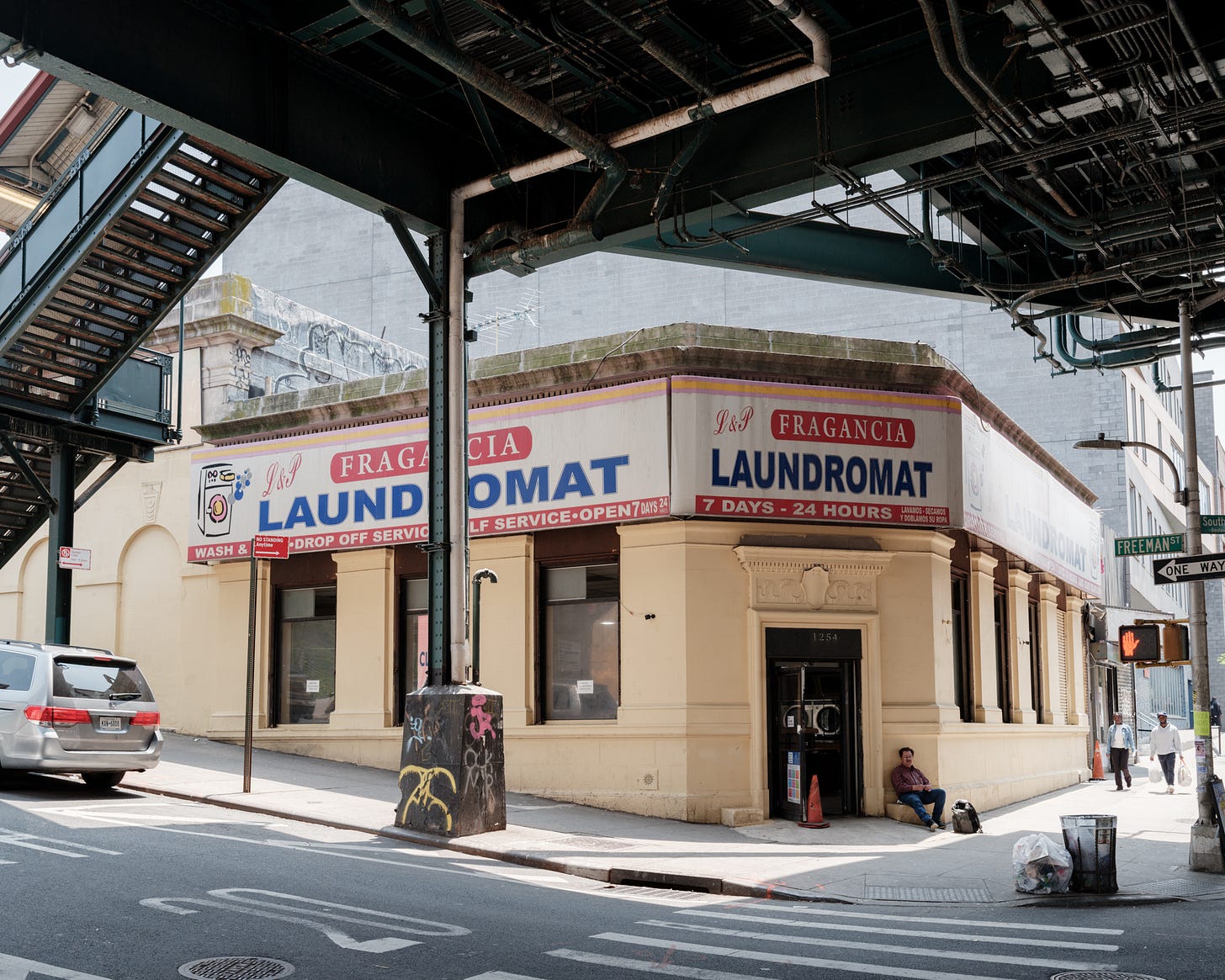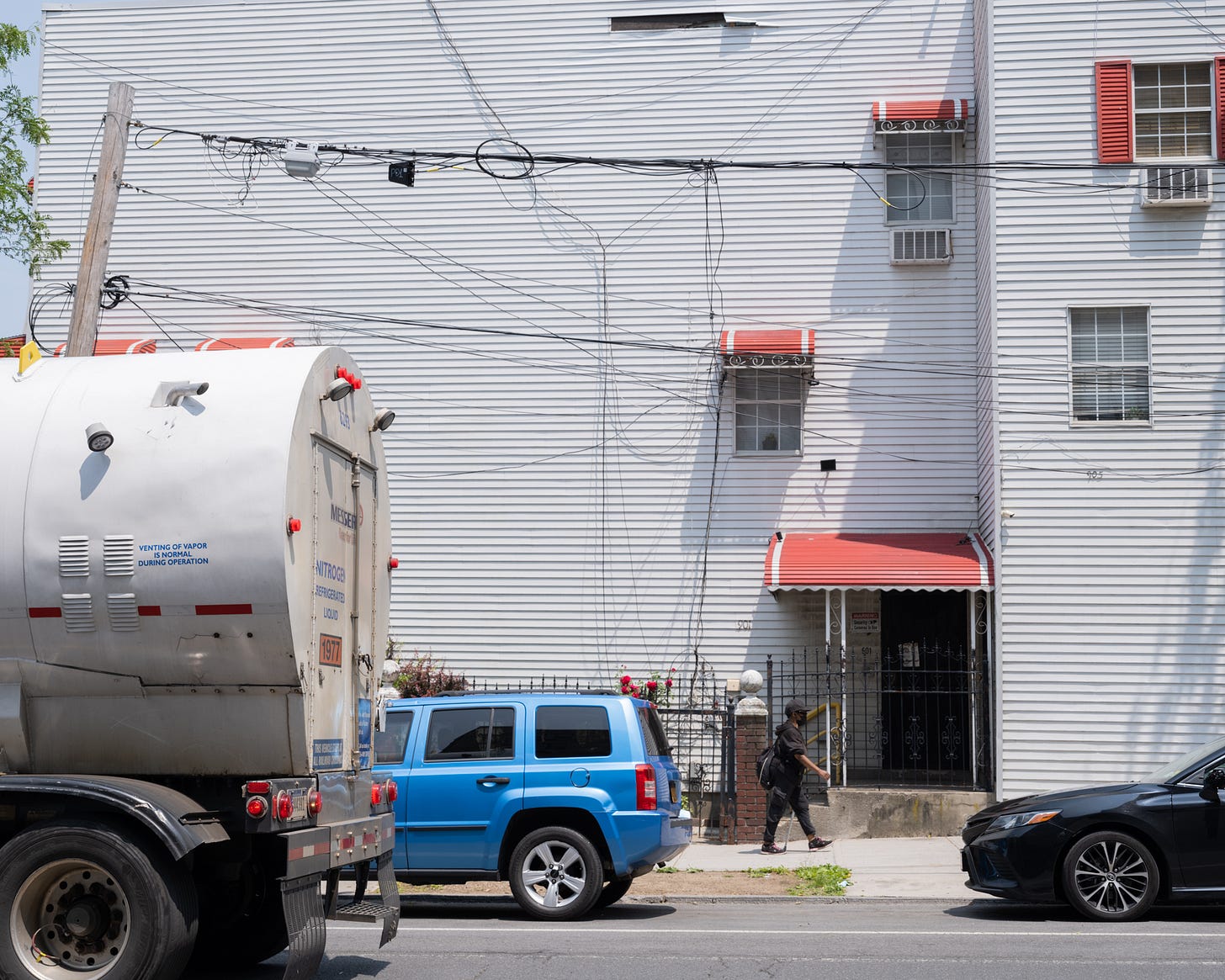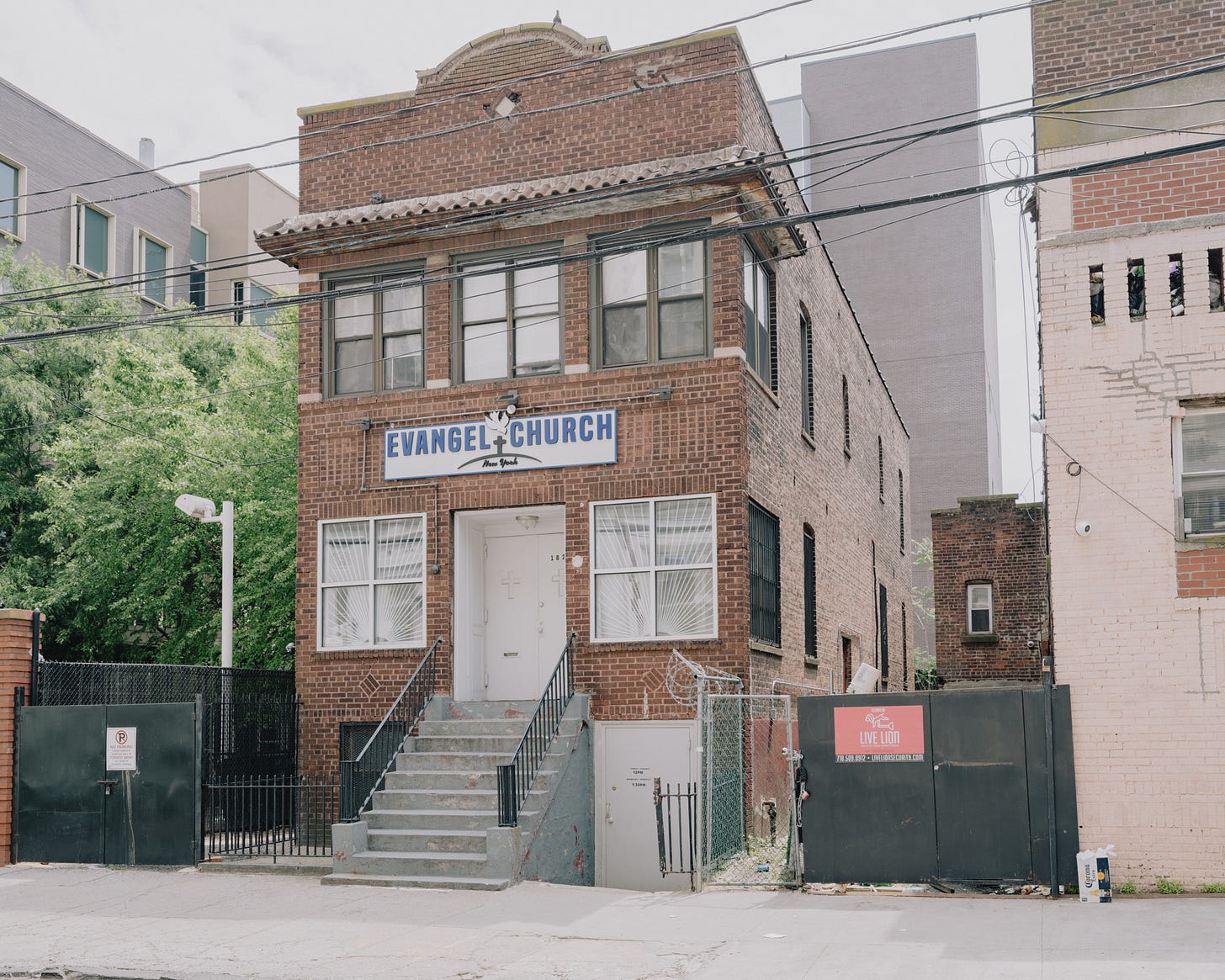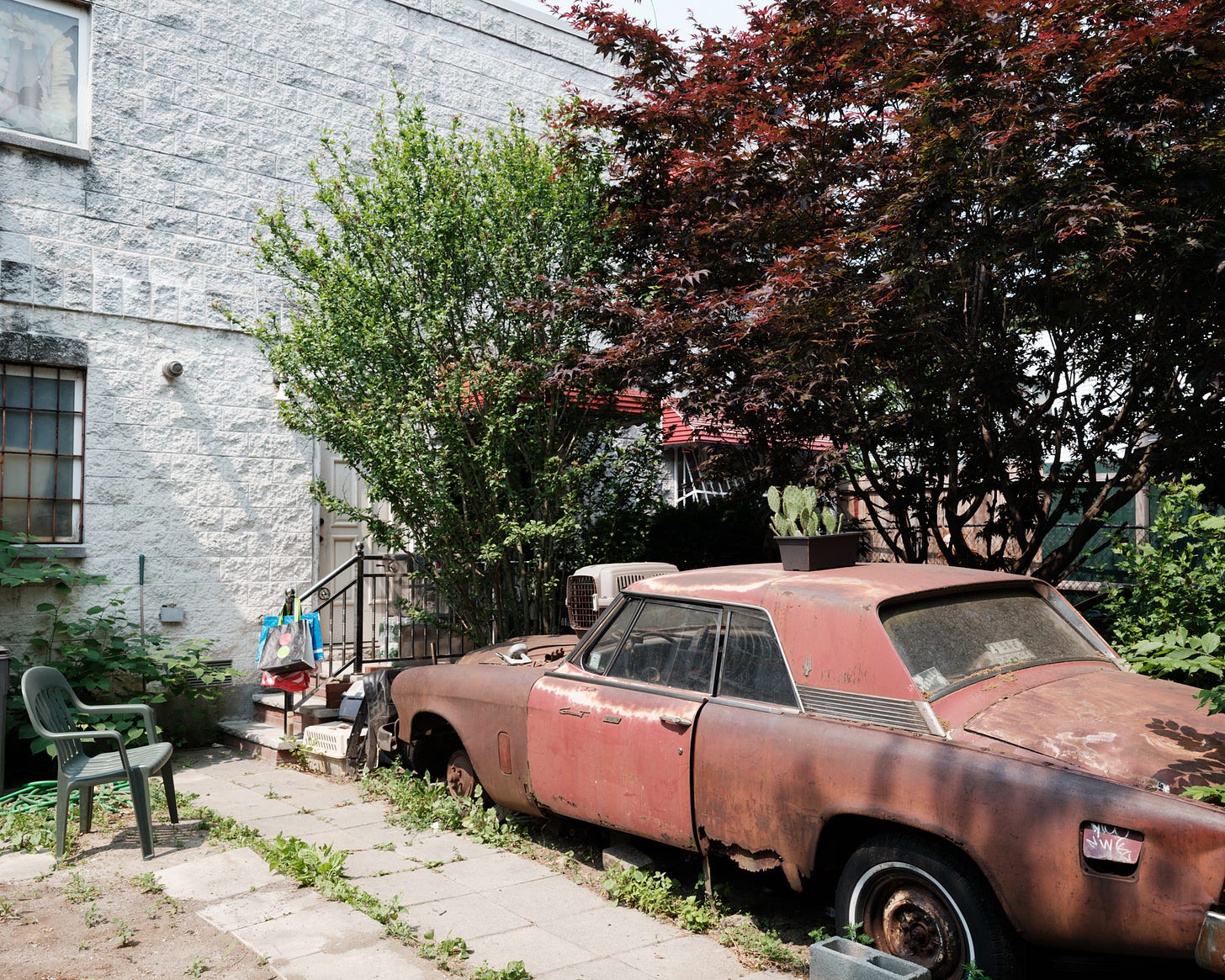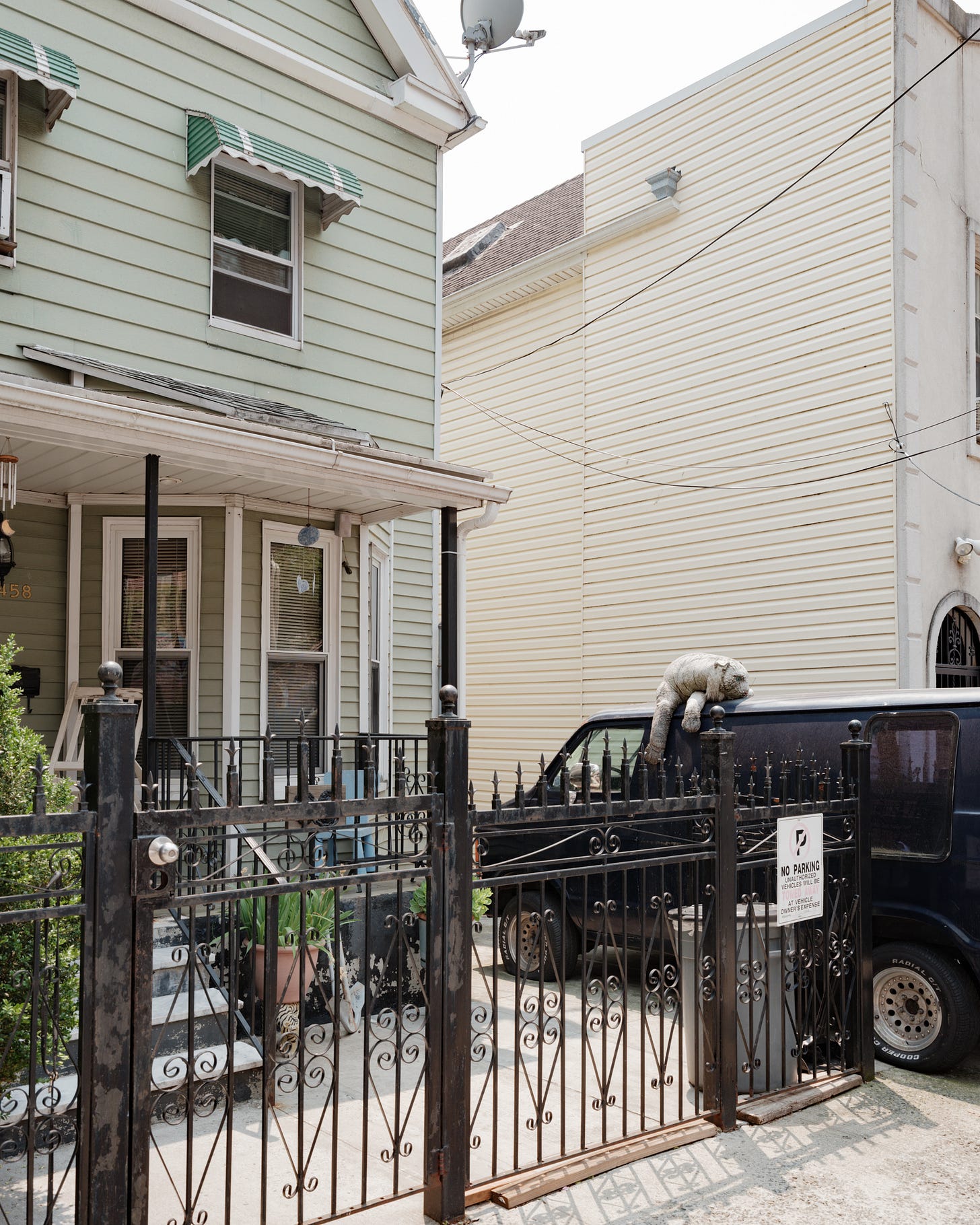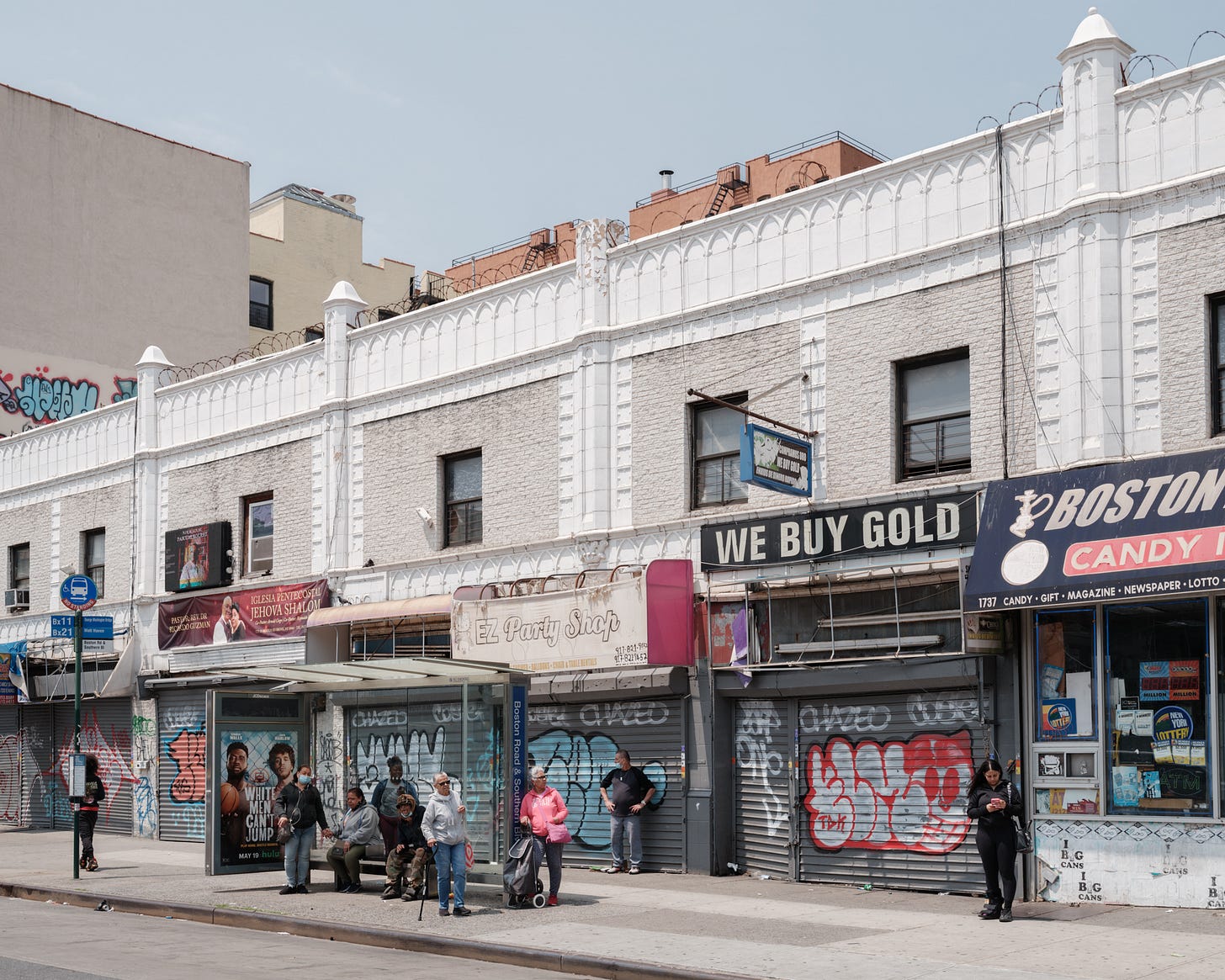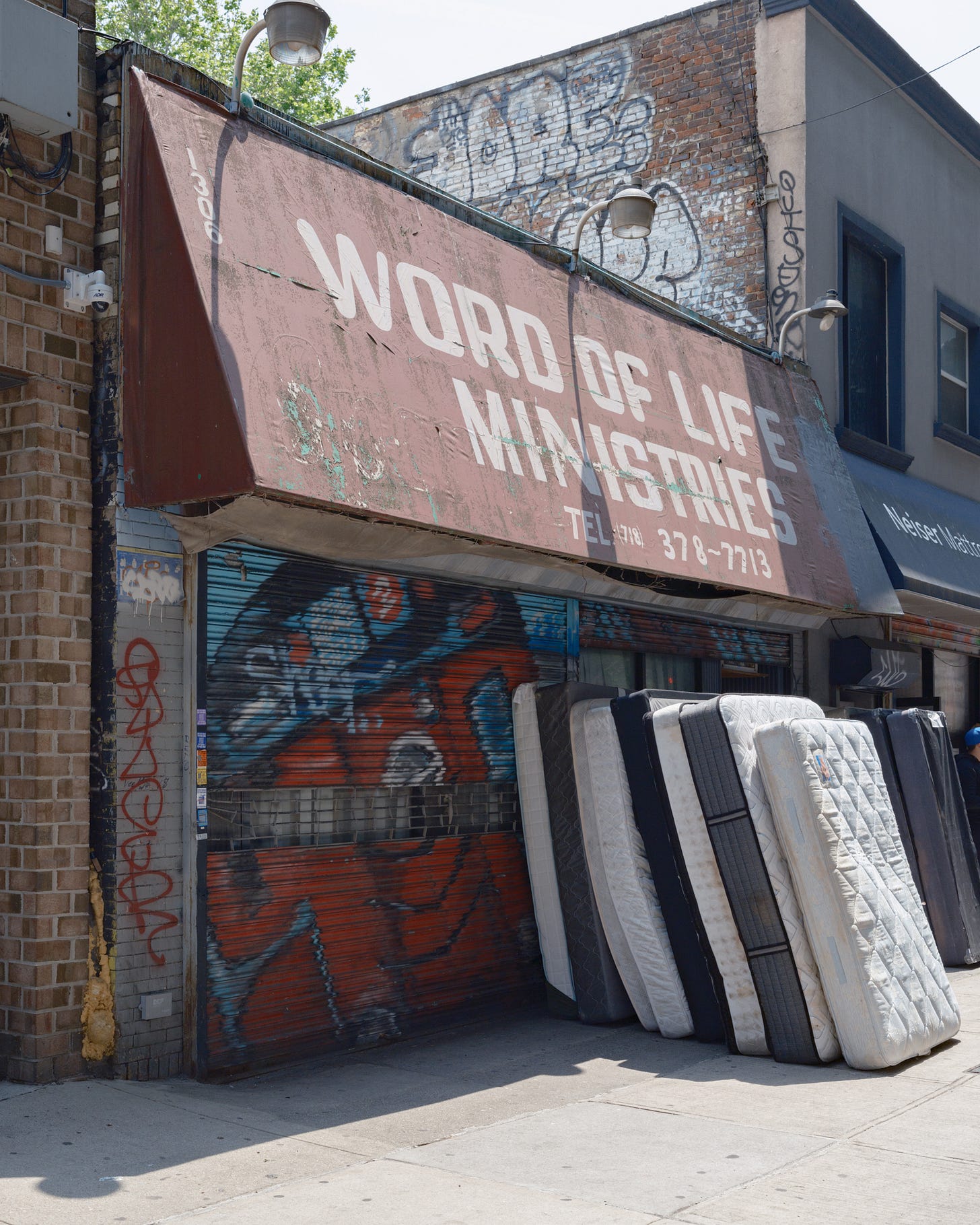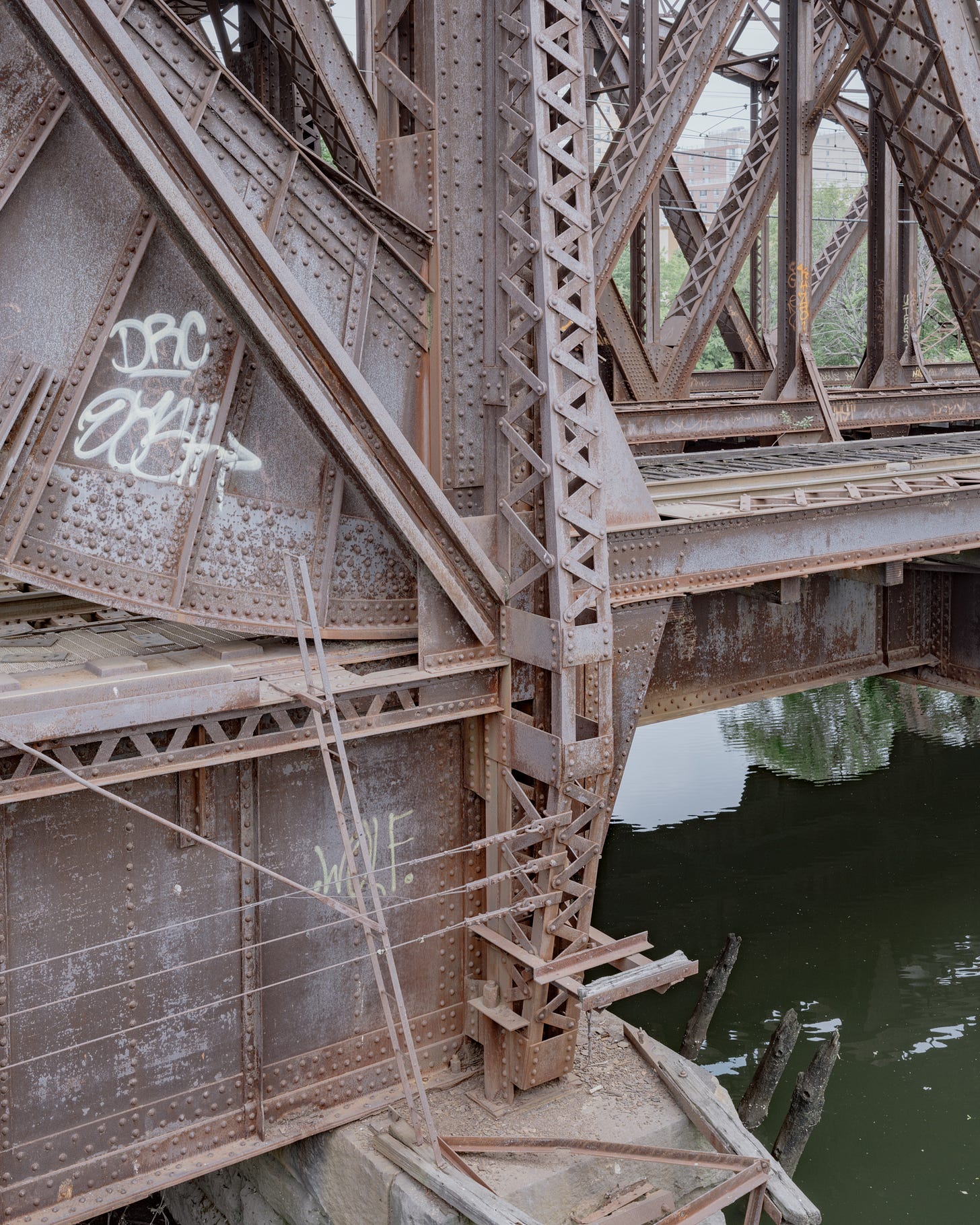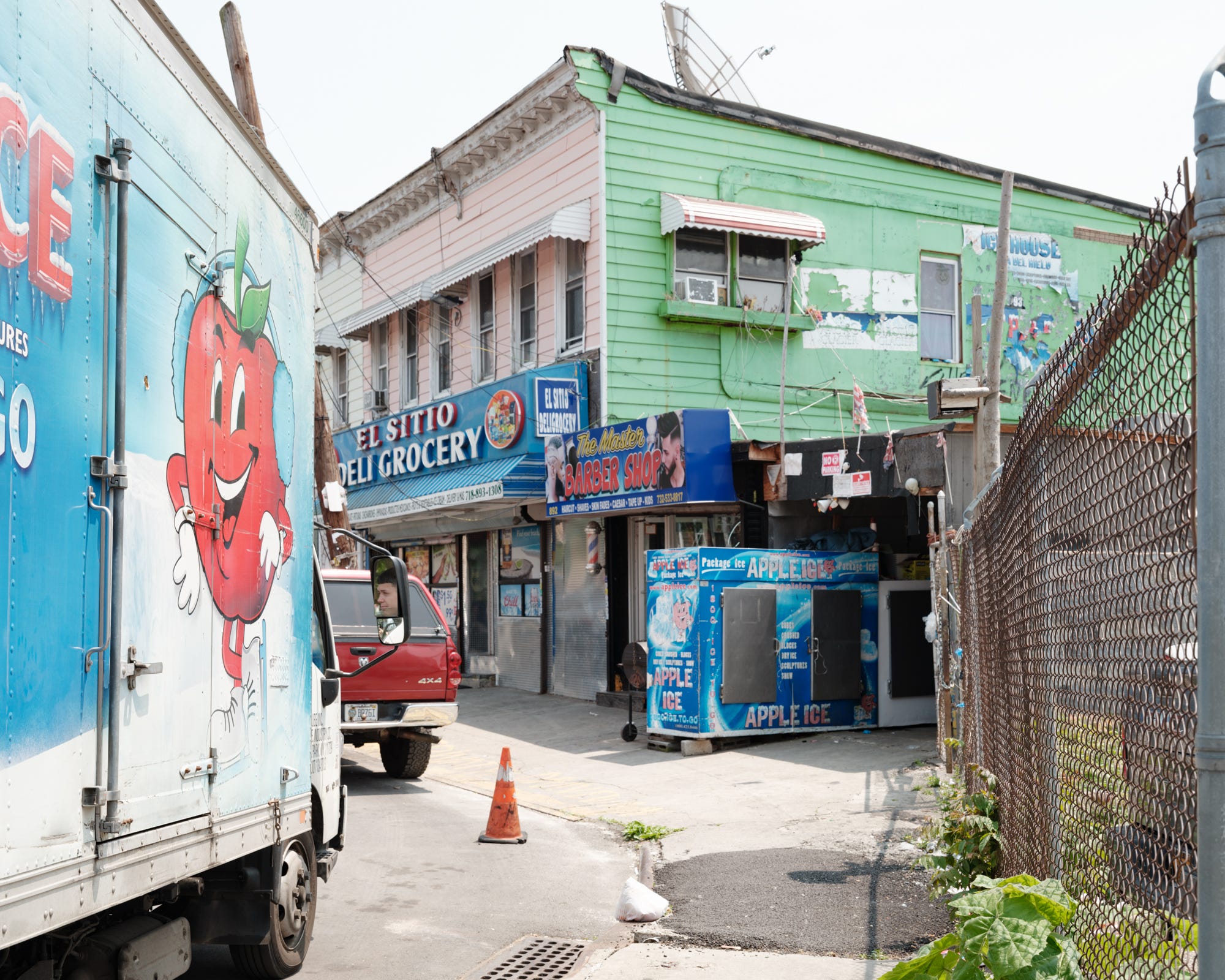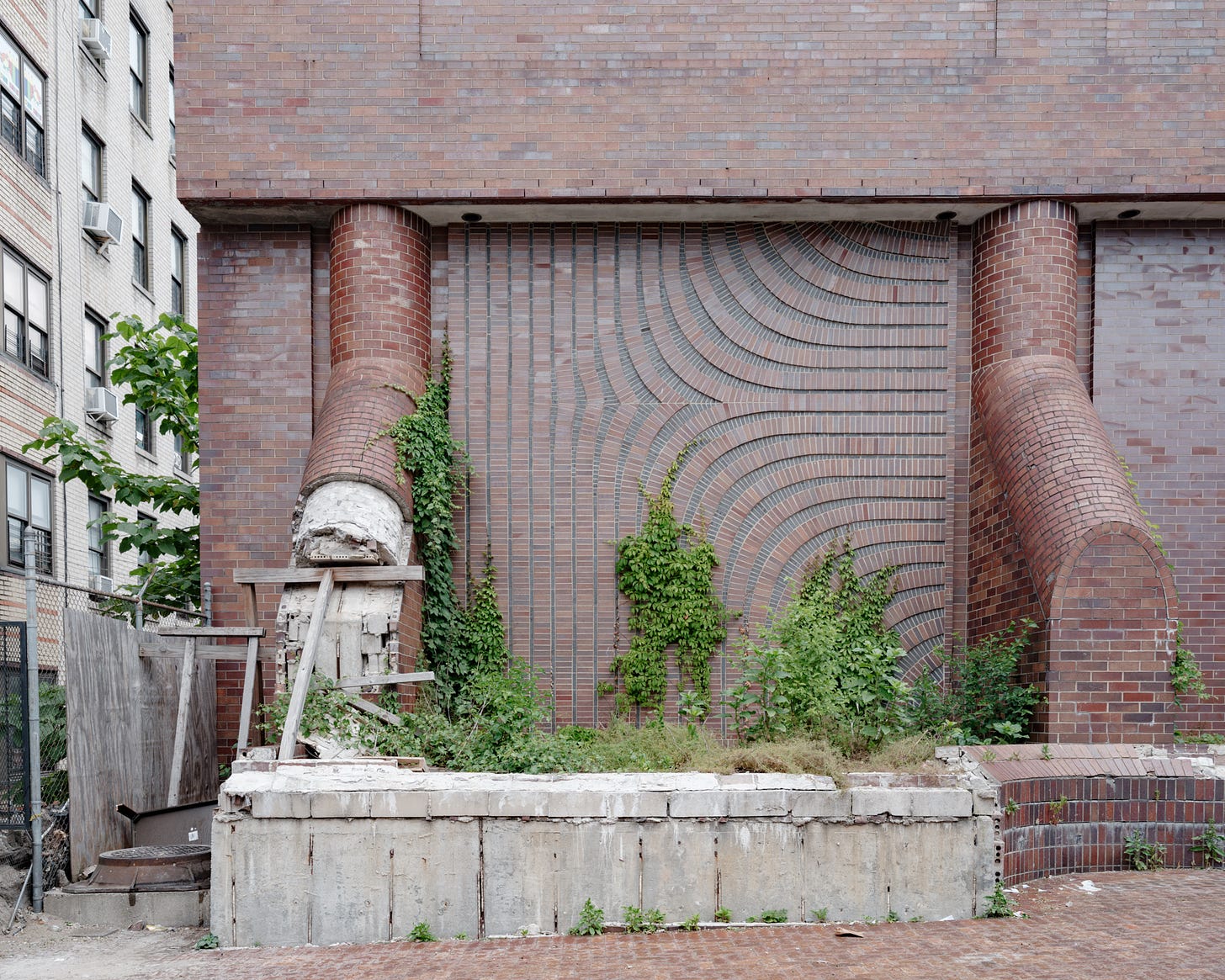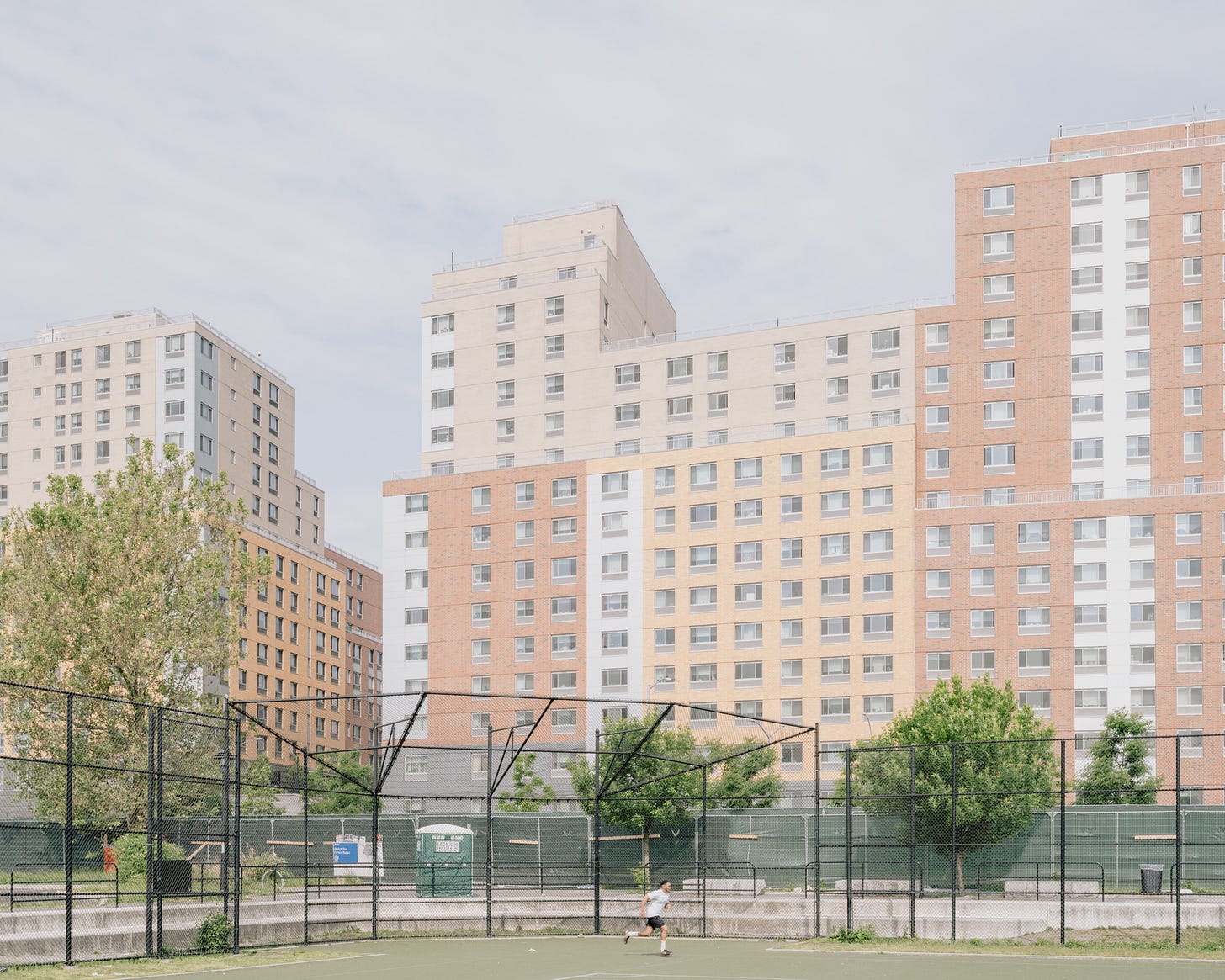Crotona Park East, if you couldn't figure it out from the name, lies due east of Crotona Park in the Bronx. It's located between the neighborhoods of West Farms to its north, Morrissania to its east, and Longwood to its south. Crotona Park East ends at the Bronx River at the recently completed Starlight Park.
STARLIGHT PARK
Part of the Bronx River Greenway, a continuous series of parks and trails along the river, Starlight Park is built on land that was once part of William Astor's estate. Formerly known as Exposition Park, it was the site of the Bronx World's Fair in 1918, a world's fair so spectacularly unsuccessful it featured only one other country, Brazil. Evidently, the outbreak of World War I had tamped down enthusiasm for showcases of international cooperation. In time, the park shifted its focus to the more lucrative amusement business and was rebranded Starlight Park. Its 27 acres included a roller coaster, Zancigs Temple of Mystery, and the world's largest saltwater pool with room for nine thousand bathers. The pool had a wave machine and a beach made from freshly imported Rockaway's sand.
Things were going swimmingly until, much like Midland Beach, the park began to suffer a string of calamities. In 1922, a passenger decided to stand up (what's up with these people?) on the roller coaster as it rounded a curve and fell off. Sadly, unlike Frank Gromen, he succumbed to his injuries. Several people drowned in the mammoth pool, and one unfortunate high-wire artist plunged 40 feet to his death. Then, eight gunmen made off with the personal effects of over two hundred bathers while they were cavorting blissfully unaware in the artificial waves. A boxer died after a match that took place in the park, and, the final nail in the coffin, a series of fires decimated the largely wooden park infrastructure.
By 1940, Starlight Park was bankrupt, and in the late 1950s, the former amusement park was condemned to make way for the Sheridan and Cross Bronx Expressways. A new, significantly less fun but far safer Starlight Park was christened in a small portion of the former park's footprint.
AN OILY, LITTERED DITCH
Even before the creation of Exhibition Park, the Bronx River had a reputation for its less than salubrious waters. An 1896 commission describes the river's condition:
Into this stream of varying flow, all kinds of sewage refuse and factory waste finds its way. Barn yards, privies, cesspools, gas-house refuse, the watery part of the White Plains' sewage disposal works, drains from hoses in Tuckahoe, Bronxville, Mount Vernon, Woodlawn and Williamsbridge deposit their unsanitary and foul-smelling contributions
By 1906 the river pollution had become so bad that it was killing the animals at the Bronx Zoo. Fast forward almost 100 years, and, in a brazen act of karmic retribution, the Zoo was found to be dumping 200,000 gallons of animal waste into the river daily. They had to pay 1.25 million dollars to undo some of the damage they had caused. A couple of years later, the New York Botanical Garden joined the ranks of last-groups-you-would-expect-to-be-poisoning-the-water-supply when they got caught offloading nearly 5,000 gallons of pesticides, fertilizer, and oil-tainted water into the river every day. When you can't count on your municipal zoo or botanical garden to keep the river clean, you have a problem.
Miraculously, cleanup and habitat restoration efforts were ultimately successful, and today, the river that the Times once called "an oily, littered ditch" is clean enough to blow Nick Banko's mind.
DOLPHINS HAD ME SHOCKED
In January of 2023, Instagram user Nick_Banko posted a video of two dolphins cavorting in the waters of the Bronx River with the following caption:
ALRIGHT NOW I NEED SOME ANSWERS IF YOU FROM THE BRONX & KNOW THIS PARK SOMEBODY PLEASE EXPLAIN TO ME WHY TF IS THERE DOLPHINS 🐬 IN THE F***NG PARK S**T HAD ME SHOCKED 😭
The Parks Department had the answers Nick needed:
It’s true—dolphins were spotted in the Bronx River this week! This is great news—it shows that the decades-long effort to restore the river as a healthy habitat is working. We believe these dolphins naturally found their way to the river in search of fish.
(Let’s not get carried away, Maurice.)
The transformation of what was once a fetid waterway choked with rusted car parts, toxic chemicals, and elephant dung into a healthy, thriving ecosystem that attracts animals instead of killing them is pretty remarkable. It is absolutely worth visiting the park if you're in the area. While it may lack the panache of what was once "the largest and finest pleasure park in America," it is a far more tranquil respite from the city. Plus, dolphins!
THE WORST SLUM IN AMERICA
The seventies were a time of upheaval in New York City and nowhere more so than in the South Bronx. A confluence of factors, including white flight and the construction of the Cross Bronx Expressway, decimated home values and sent the whole area into a steep downward trajectory. Slumlords, rather than lose money on vacant buildings, paid people to burn them down to collect the insurance.
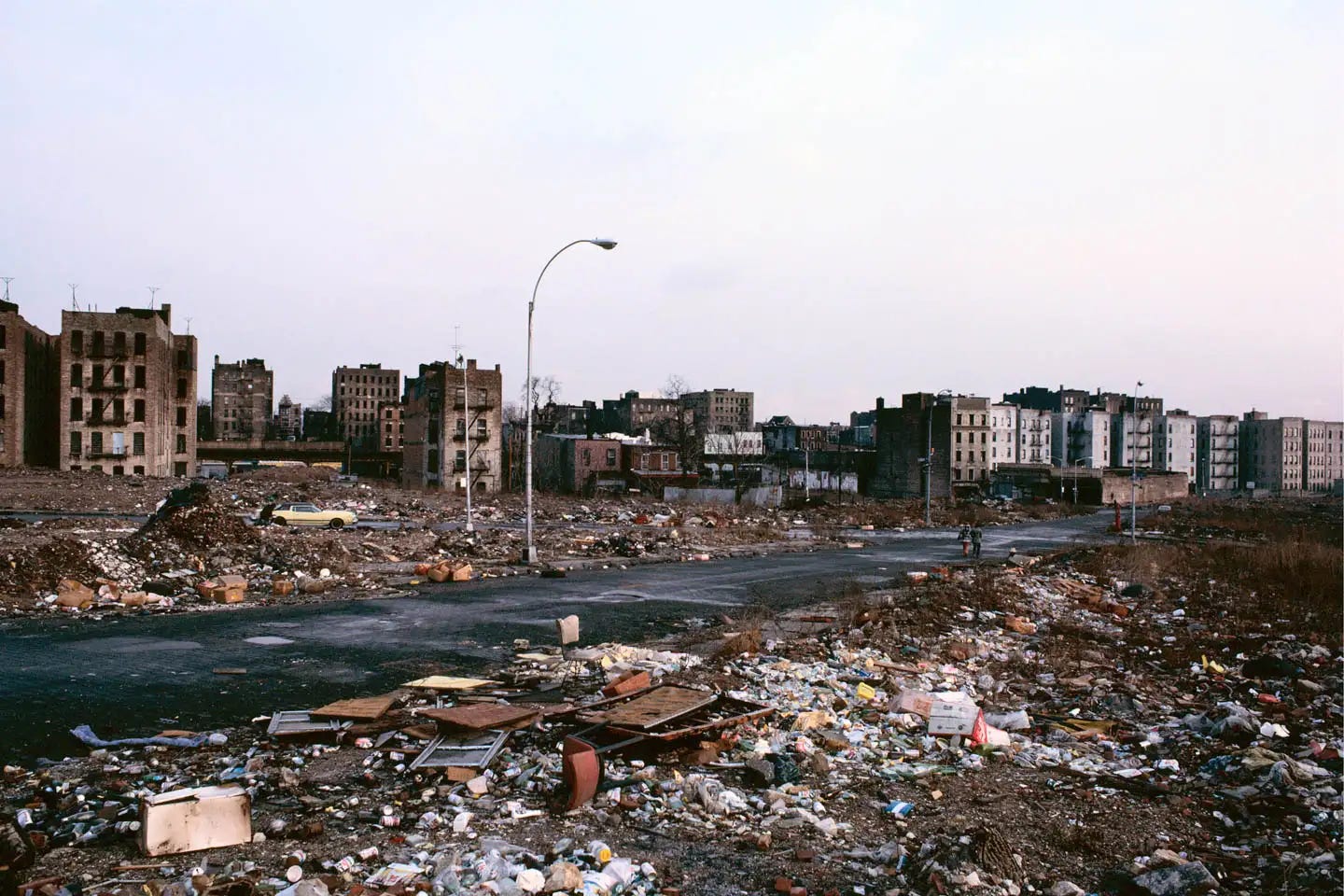
Fires were so prevalent that the fire department stopped responding to calls. In 1977 Jimmy Carter paid a surprise visit to Charlotte Street in the heart of Crotona Park East, calling it "the worst slum in America."
Visit modern-day Charlotte Street, as I did last week, and you will find a cluster of ranch style single family homes that feel more like a suburban block in Islip than a street in the Bronx.
It is hard to imagine this area was used as a dramatic photo op for three different presidents (Carter, Regan, and Clinton) while campaigning on their promises to address urban blight. Like many things, it took time and, more importantly, community involvement to effect change.
DESPERADO
Genevieve Brooks moved to Charlotte Street in the 60s when it was still a thriving neighborhood. Brooks watched as the area began to deteriorate and responded by organizing a block association and spearheading community cleanups and plantings. As conditions continued to worsen, Brooks realized she needed to think bigger and formed the Mid-Bronx Desperadoes, "a coalition of volunteers determined to save their community from the overwhelming incidents of arson, disinvestment, abandonment, and population loss that had decimated the Crotona Park East." Partnering with urban planner Ed Logue (atoning for some of Robert Moses' sins), Brooks devised a plan to build 90 houses on the rubble of Charlotte Street.
Brook's and Logue's vision was to go to the rotted core -- Charlotte Street -- and work outward. But most everyone advised them to rebuild starting from the healthy fringes. They wanted single-family homes; critics wanted density and multi-family dwellings, saying it would promote a lively, safe neighborhood and attract merchants.
Brooks, though, knew most of the families in the area were African Americans from the South, Caribbean blacks and Puerto Ricans, and she was convinced that the long home-owning traditions of these groups would help make a community of single-family homes work.
The houses sold for $50,000 (subsidized for less than half the construction price), and soon, the mini neighborhood of Charlotte Gardens had a waiting list of hundreds of families, all first-time home buyers.
CHARLOTTE GARDENS
Just be sure to stick to the sidewalk
SIGHTS AND SOUNDS
This week’s field recording bounces between the sonic chaos of Southern Boulevard and the bird (and human) song of Charlotte Gardens.
FEATURED PHOTO
Camilo José Vergara is a Chilean-born photographer and sociologist who has spent his life photographing and re-photographing American cities. His work and approach to documenting the urban landscape are a big inspiration.
For more than four decades I have devoted myself to photographing and documenting the poorest and most segregated communities in urban America. I feel that a people’s past, including their accomplishments, aspirations and failures, are reflected less in the faces of those who live in these neighborhoods than in the material, built environment in which they move and modify over time. Photography for me is a tool for continuously asking questions, for understanding the spirit of a place, and, as I have discovered over time, for loving and appreciating cities.
Here are some images from Vergara's series documenting the view Northeast from Charlotte St. 1983- 2013
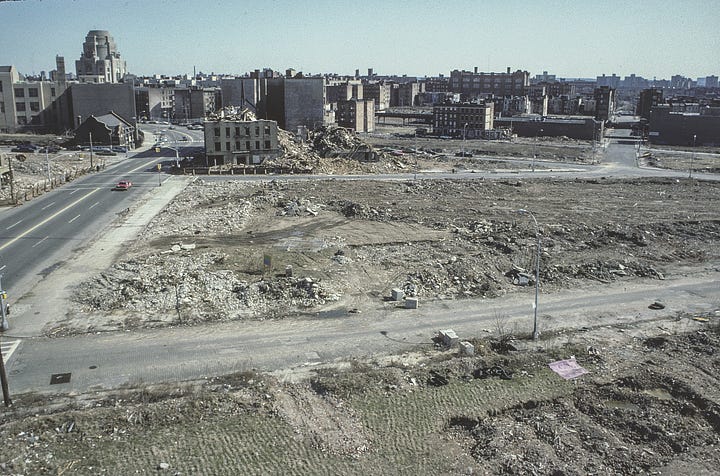
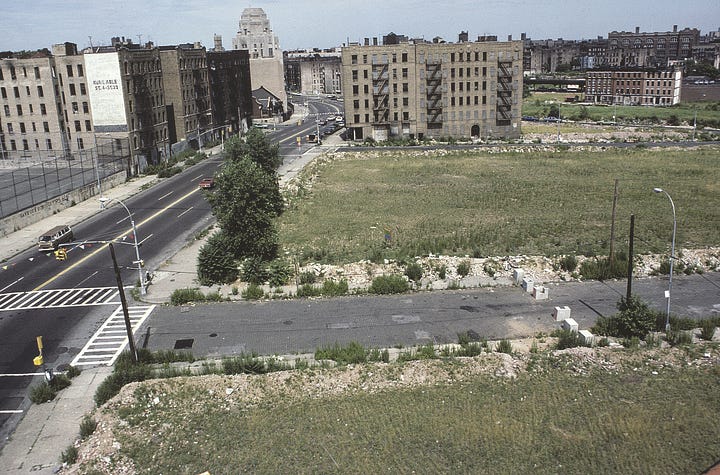
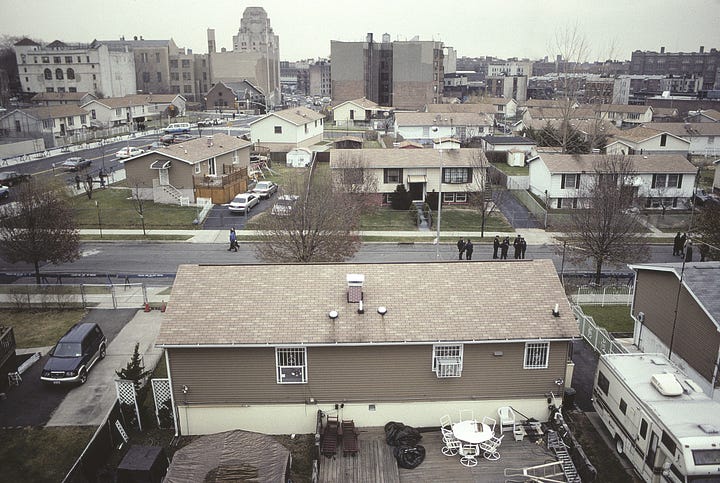
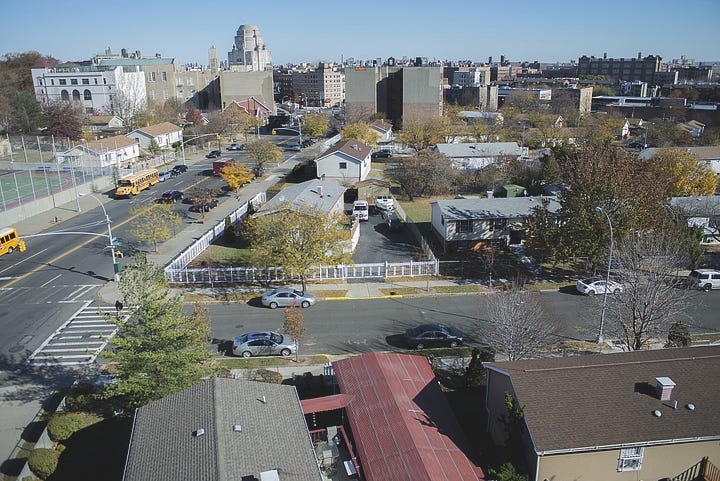
NOTES
Compass Residences is the result of the largest private rezoning in Bronx history. The development, overlooking Starlight Park, includes 1,300 affordable apartments on 17 acres of land previously zoned for manufacturing.
Juiceade is my neighborhood food recommendation. Super nice people and good food (shout out to the LOVE wrap) though I can’t vouch for the sea moss.
Those two photos of the bathers in Starlight Park are from the Library of Congress website. Both subjects are Broadway showgirls. Eight years after this photo was taken, Eleanor Tierney (on the left) filed for divorce from her husband, millionaire Nick Takis citing gin, jazz, and ladies as the reasons for the separation. When served with the divorce papers, Nick responded with a sigh, "I always thought the world of my wife, but somehow I liked my parties better."
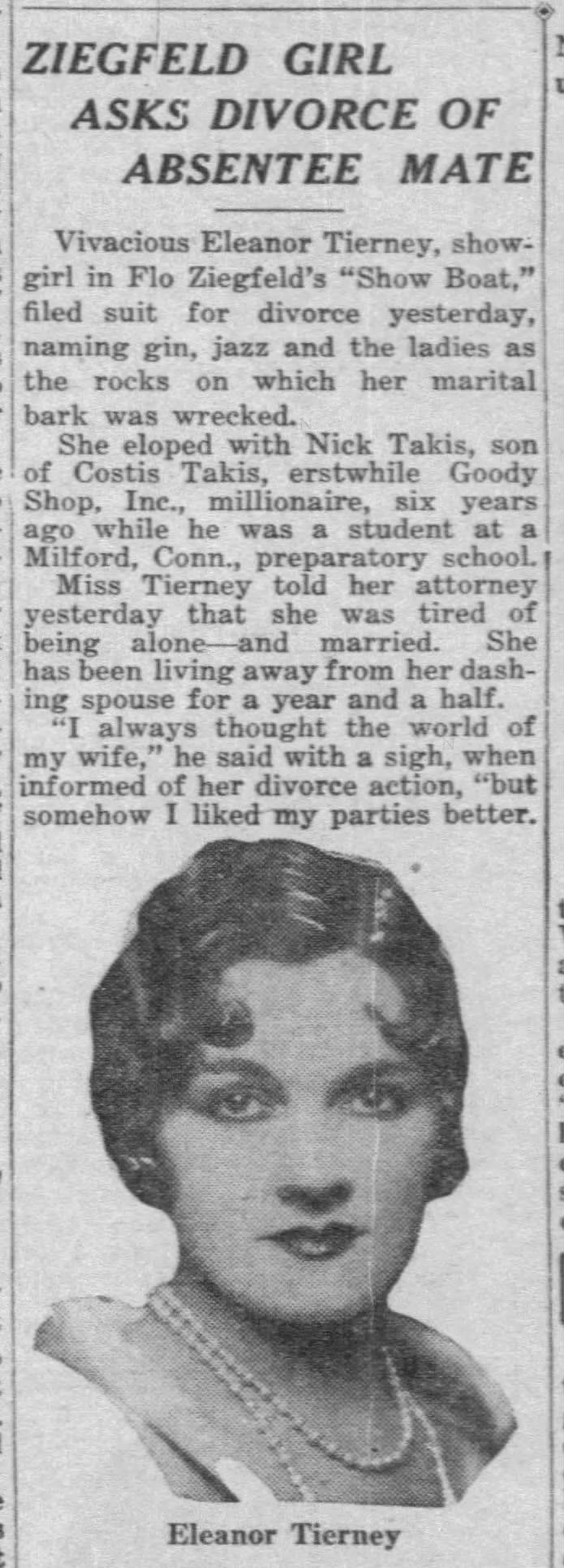
Daily News, March 13, 1929

